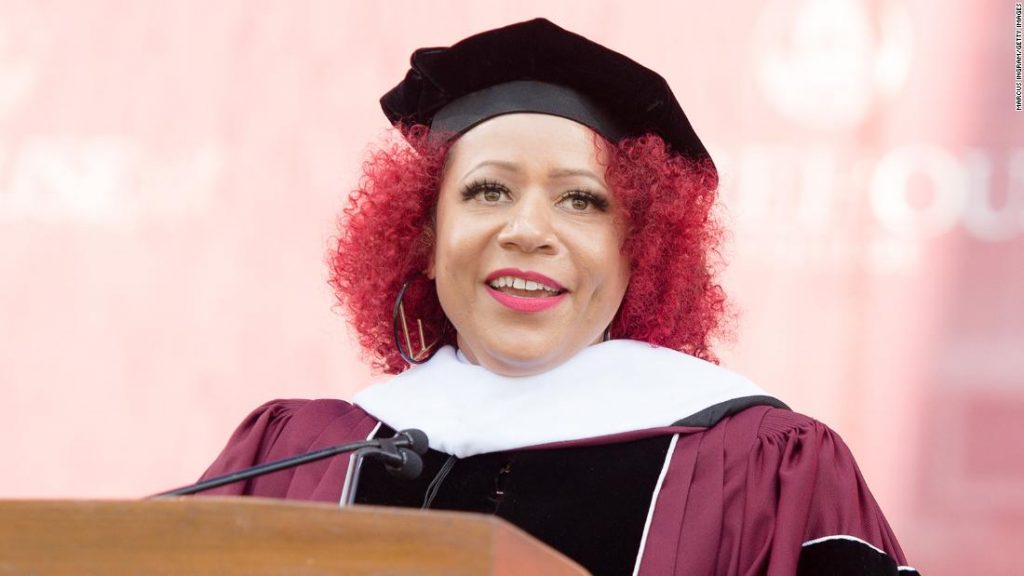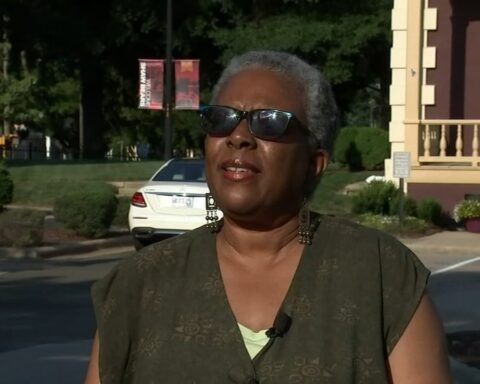The months-long tenure struggle between the University of North Carolina at Chapel Hill and Nikole Hannah-Jones was never about debates over the 1619 Project.
The fight was about power — about the White conservatives who thought that the Pulitzer Prize-winning Black journalist had gained too much of it.
“I have studied power my entire life from within institutions where I wielded none. I have written about it. I have reported on it. I have read about it. I have observed it. And, over the years, I have worked myself to accrue it, which is really what angers so many people,” Hannah-Jones herself noted on Twitter.
She had barged into the overwhelmingly White world of academia, unsettling it. And for that, she was punished.
UNC eventually granted tenure to Hannah-Jones, who, notably and defiantly, declined the position and opted to join Howard University, a historically Black school.
Still, the episode, like Cornel West’s announcement this week that he had resigned from Harvard University, cracked open conversations about how privilege and systemic racism play out in higher education.
How is racial inequality entrenched in universities and colleges? What did the tenure saga reveal about the experiences of Black students at majority-White institutions like UNC? And with Hannah-Jones relocating to Howard, will HBCUs get the respect they deserve?
To parse these questions about race in higher education, I spoke with Adam Harris, a staff writer at The Atlantic, where he covers education, and the author of the forthcoming book, “The State Must Provide: Why America’s Colleges Have Always Been Unequal — and How to Set Them Right.”
The following conversation has been lightly edited for length and clarity.
How is inequality baked into our higher education system?
Even the foundation of the public higher education system — in particular, as we think of it today — wasn’t necessarily built on the idea of broad accessibility for everyone. It was built on the idea of creating places to train White male farmers. There were places to teach men the art of war. There were places to teach men the law. But there weren’t places to teach men how to be productive farmers.
What grew out of that was the 1862 Morrill Act, which was a way to give states land scrips — often for land taken from Native people — that could be sold to fund schools. These institutions were attended almost solely by White men for the first few decades of their existence and in some instances by White people for more than a century.
From that foundation, you have different iterations of bolstering and defending that inequality. The federal government goes through iterations of programs where it’s funding institutions that are locking Black folks out and going to court to defend segregation laws.
Meanwhile, the institutions Black students attend are underfunded. However, they’re still over-performing. After all, these are the institutions that are creating Black doctors and Black lawyers and building the Black middle class.
The biggest losers in all this were UNC’s Black students, who missed out on the opportunity to have someone of Hannah-Jones’ caliber on campus and who may question whether the school really values them. Does this tension reveal anything about the experiences of Black students at predominantly White schools?
Over the past few years, there’s been a reconsideration of the relationship between PWIs and Black students. Around 2016 and 2017, you start to see a lot of articles about how Black students are rethinking their places on these campuses.
From the integration of colleges to now, there have been several iterations of student protest at PWIs — Black students calling for greater diversity in the student population and greater diversity in the faculty population.
Also, as campuses have become more diverse, you have more faculty who are in adjunct roles, in conditional roles. So, they’re also trying to fight and survive and stick around at these institutions, hoping that they can achieve tenure.
More and more, Black students might look at a place like Howard or Alabama A&M, where I went, and say, “My whole self will be appreciated and nourished at this institution.” I’ve spoken with several Black students who’ve said, “I chose this HBCU. It wasn’t my fallback option. I chose this because I wanted a place where I would be supported.” Black students are thinking about where they want to go — about what place might best serve them in the long run.
And of course, after deliberation, these students may decide to go to a school like UNC. But I think that Hannah-Jones’ move has reoriented people’s mindsets. For a long time, if you hadn’t had much association with an HBCU, you might’ve thought that it was a fallback option, when, really, these institutions aren’t any less academically rigorous than PWIs. People actively seek out these institutions. Professors are called to these institutions. And students who go to these institutions thrive afterward.
So, our higher education system is tremendously flawed. How do we correct years and years of racial discrimination?
One of the first things is a kind of reconsideration of how states are funding higher education, specifically public higher education. For instance, it’s critical to ask, Are institutions that enroll high numbers of Black students receiving significantly less funding? This is the case in lots of states. Typically, as an institution has more Black students, it receives less money.
That’s in part because some of the most selective institutions in most states enroll few Black students. It’s the way that the system has historically been set up.
And the kind of piecemeal solutions that have been proposed to address this don’t necessarily get the job done, particularly because it’s such a root problem. Public policy created this problem. Public policy is going to be able to fix it.
I also caution against the idea that philanthropy will solve everything, that the rush of giving to HBCUs over the past year will assuredly continue. In 2020, we saw several of the single largest donations ever to HBCUs, and some of those donations were $5 million. You have to remember that other institutions have been able to benefit from years and years of those sorts of donations, years and years of state funding. You have to ask, What could these colleges have done to build on that money? How much money did they miss out on by not being able to build over time?
One injection of money doesn’t undo decades of segregated and fundamentally inequitable education.




